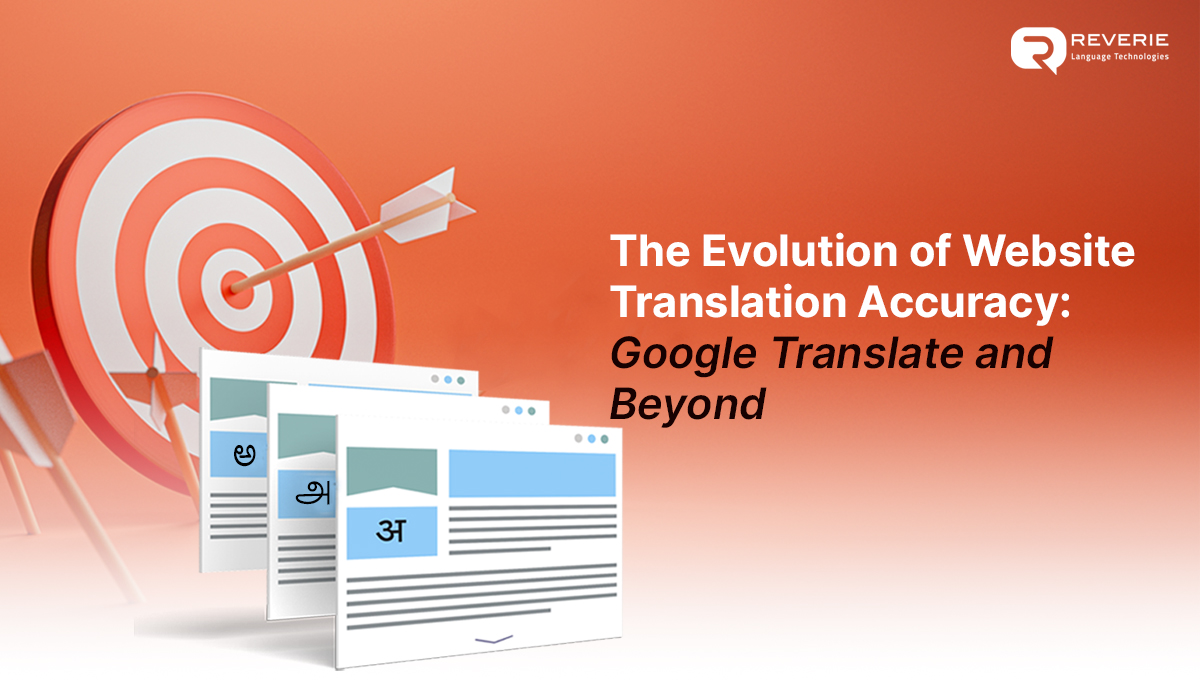Google Translate (GT) was first launched in April 2006. It provides language translation services in multiple languages, 133 languages to be precise. Thanks to its easy-to-use interface and free availability, it has managed to remain relevant and popular among millions of users years after it was first launched.
Widely used across the globe to overcome communication barriers, Google Translate is a life-savior for people especially when traveling to a foreign land. However, is GT accurate enough for all translation needs? This question becomes even more critical in a business context especially if a business is operating in multiple regions.
For Indian businesses, the challenge is even bigger given the country’s linguistic diversity with more than 1600 languages and dialects. This can present a formidable challenge to any translation tool, including Google Translate. While machine translation has evolved a lot in recent years, there’s still a lot of talk about its quality and effectiveness. As a Neural Machine Translation (NMT) engine, now, Google Translate provides a better translation quality, but it still has its limitations. This can pose numerous challenges for a business that needs website localisation.
Read about website translation vs website localisation here.
In this article, we take a closer look at Google Translate’s effectiveness and capabilities. We also deep dive into the limitations of the tool and how other language solutions, such as Reverie, can help businesses overcome them in the Indian context.
How Does Google Translate Work and Its Evolution
In 2016, GT was updated with a neural machine-learning model. The advances in machine learning are the most significant technological milestones for Google Translate. But have you ever wondered how exactly Google Translate works? Let’s find out.
The Evolution of Google Translate
Google Translate currently operates on the principles of Neural Machine Translation (NMT), with the Transformer model at its heart. However, when this tool was launched in 2006, it had a humble beginning, with traditional statistical translation models. It relied on basic translation algorithms that could provide users with translated texts instantly, but it was majorly efficient for brief sentences. For longer or more complex phrases, it sometimes provided odd translation results.
Over the next decade, Google worked and developed a framework, Google Neural Machine Translation (GNMT). A year later, in 2017, Google introduced a deep learning architecture called the Transformer model. GNMT’s introduction in 2016 marked a significant shift in the way Google Translate worked. It allowed Google Translate to translate long sentences at once by fetching the meaning of the entire sentence and translating it by using an AI-powered neural machine algorithm. It ensured that translations were contextually appropriate and coherent.
Think of this technology as a neural network that consists of a set of layers. This enables Google Translate to extract the meaning of a sentence like a human being leading to more accurate translations with appropriate grammar and context. According to a report, the introduction of GNMT resulted in a decrease in errors by 60% across major languages. But wait, there’s more to it. Another factor that helps in the continuous refining of Google Translate accuracy is that it also relies on crowd-sourced data. But this brings us to another question, can Google Translate outperform a human translator in providing quick and accurate translations? Let’s learn more about its accuracy and reliability.
How Accurate is Google Translate?
Google Translate can translate more than 130 languages, which makes it a powerful tool with a wide range of support. In some cases, for instance, a pair of Spanish and English, its accuracy stays around 94%. But as the language pairs vary, the accuracy of Google Translate varies too. According to a study by UCLA Medical Center, while the overall average accuracy of Google Translate is about 82.5%, the accuracy between languages varies drastically, spanning between 55% and 94%. This study used English source content to check the accuracy of the target languages. Here are the results:
Language |
Accuracy % |
| Spanish | 94% |
| Korean | 82.5% |
| Armenian | 55% |
| Farsi | 67.5% |
| Mandarin Chinese | 81.7% |
This shows the difference between the accuracy of Google Translate in relation to different languages. Have you ever ended up with a Google Translate result that didn’t make much sense when it came to the everyday expressions you use in your language? This happens because popular and frequently used language pairs provide Google Translate with richer data sets. That’s why the GT accuracy rate stays higher for common language pairs, like Spanish and English.
For a linguistically diverse country like India, the Google Translate accuracy rate can vary even more. The regional variations, nuances, idioms, and cultural expressions of various Indian languages make it difficult for Google Translate to provide accurate results for each language.
For example, for a frequently used language pair like Hindi and English, the accuracy is more likely to be higher than other local language pairs like Marathi and English or Odia and English. This points to the need for an expert for proofreading and cultural understanding in translations. For businesses that are aiming to expand their reach to India and want to connect with the local audience, proofreading translations becomes even more critical. If we bring website localisation for Indian languages into the picture, the need for proofreading becomes even more evident.
Google Translate and Website Localisation
Not everyone can afford to hire human resources to translate thousands of phrases. Moreover, human translation takes a lot of time, which is why Machine Translation (MT) is widely used. With the introduction of deep learning and neural machine translation (NMT), it offers even more reliable results. However, its accuracy still majorly depends on the data available for different languages. For website localisation, Google Translate can provide businesses with a convenient base. But with other translation tools and expert proofreading, it can offer better results, especially for Indian languages.
Reverie’s Anuvadak for Website Localisation
Indian languages carry their own sets of nuances, idioms, and cultural significance, making localisation more complex. This is where Reverie Language Technologies’ Anuvadak platform steps in for website translation and localisation in Indian languages. Anuvadak uses its Neural Machine Translation (NMT) technology to bridge the gap between cultural connectivity across India’s myriad languages. Reverie’s NMT is customised to understand and apply the subtle nuances and context of Indian languages and dialects to provide translations that are accurate and culturally relevant.
It also has the ability to handle the complexities of the Indian language, including idiomatic expressions and context-dependent meanings. Anuvadak further revolutionises website localisation by automating the translation process while ensuring quality. Every time the content is updated on your website – Anuvadak translates it into the chosen language in real-time.
Businesses can also leverage the real-time content management and quality checks of Anuvadak’s platform. This is especially beneficial for dynamic content that changes frequently. So, whether it’s a product description or a news article, Anuvadak ensures that the content remains relevant and accurate after translation. It empowers you to communicate effectively and authentically with your audience in their native language.
When to Use Google Translate
Google Translate, despite its limitations, is a smart tool that offers quick translations.
Here are a few scenarios where Google Translate can be useful:
- Low-visibility content that does not require the highest quality, such as website footers or FAQs.
- Repetitive content, such as instruction manuals.
- Product reviews, feedback, and other user-generated content.
Reverie’s Anuvadak: Revolutionising Website Localisation
The diverse linguistic landscape, like in India, requires professional and culturally nuanced translations. This is where Reverie’s Anuvadak emerges as a crucial asset for businesses looking to localise their website for the Indian market. It not only translates but truly localises the content. Reverie’s advanced NMT and Anuvadak platform ensures that you can communicate with your target audience effectively to build genuine connections.
Localisation requires more than just converting text from one language to another. It requires a deep understanding of cultural nuances, idioms, and local expressions. Don’t let language barriers limit your business’s potential. Explore how Reverie’s Anuvadak can transform your website localisation efforts, connect with our team by clicking here!



